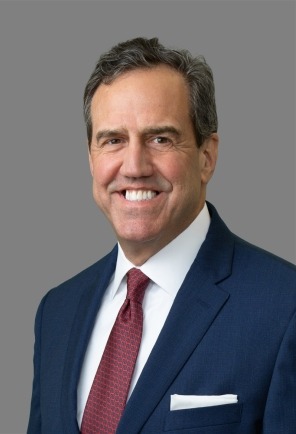Keeping the CEOs Agenda on Track: Speed and Good Communication
“CEOs who embark on a corporate transformation challenge their organizations to act and think differently than they did yesterday to achieve step change improvements in EBITDA that will provide funding for real growth, said Alvarez and Marsal’s (A&M’s) Joseph Berardino. “A&M provides a fact base that challenges incremental thinking and introduces processes to provide management the courage to make the hard, but right, decisions.”
Corporate transformations are enterprise-wide initiatives that require substantial change in highly condensed time periods. This speed is often required after years of declining performance and failed efforts that were focused on incremental change at best. The change that has historically been carried out has been slow and watered down, and doesn’t address fundamental business issues. No matter the reasons for why the Board wants to initiate a corporate transformation, often the organization has little interest or capability to undertake dramatic change. Instead, muscle memory has been built to resist change. In our experience, it is under these circumstances that condensed timeframes for change become imperative. A&M is brought in to drive the organization at a very aggressive pace and to prevent these familiar defense mechanisms from hijacking the CEO’s agenda. Listed below are some of our best practices for keeping the CEO’s agenda and management team on track.
Don’t set out without a roadmap
“Identifying opportunities and implementing change are not done hastily and we certainly do not take a rigid, cookie- cutter approach,” says Ron Orsini, Managing Director at A&M in Houston who has led numerous transformation projects. “It’s fast after a lot of preparation.”
Once the board has determined they need to drive a transformation, A&M works with clients to develop a roadmap, combining an impartial, fact-based assessment along with the executive team’s knowledge of the business. This is often before the transformation is announced to the full employee group. A&M’s experience with restructuring situations (in which companies need to cut costs immediately) allows them to make this initial phase fast, as well.
“Our transformation teams are comprised of operators who already know where to look for EBITDA and cash flow improvement,” says Orsini. “We know the top 10 questions to ask to identify the big opportunities.”
On a recent engagement in which a client with global operations asked A&M to identify $100 million of cost reductions, the Board requested an actionable plan in 45 days. In that time, A&M did the legwork to identify and quantify a list of recommendations, along with implementation plans. The engagement began in February and all of the annualized $100 million in savings were realized by August. That’s six months for full implementation. Why does speed work? “The proof is in the results,” says Orsini.
Let everyone know
Once the comprehensive roadmap is developed and has the support of the executive team, the next vital step is to communicate the plan across the company.
“Change cannot take place if it is not widely known that the transformation is being driven by the top of the organization,” stresses Orsini. This will undoubtedly be an uncomfortable time for the company. It is especially difficult with employees often fearing for their jobs. Having done the groundwork on where the exact organizational changes need to happen ahead of time allows for the simultaneous announcement of the overarching plan along
with difficult actions that have been taken. This “big bang” approach minimizes the painful time period and allows for the benefits to become clear much more quickly.
To allow significant changes to happen fast, A&M brings its own team to work alongside company leaders on a short-term basis to complete implementation initiatives in parallel. In many cases, some initiatives will be led by A&M and others by company personnel, both reporting into a central program management office. The full team, led by the CEO, should meet once a week to review what has been done and to address any new risks to the timeline.
“People are doing their day jobs – they don’t have time to do all the planning, actions and communication that is needed,” says Orsini. “We bring temporary, skilled resources to help them to do the tough stuff fast.”
Don’t get derailed by excuses, or technology
Resistance to change comes in many forms. One challenge that is heard time and time again is technology. “There will be people stating ‘we can’t centralize procurement because we don’t have a system that can do that and support all the locations’,” says Orsini.
During the planning stage, leaders should make sure technology does not become an excuse for putting off necessary changes. We at A&M analyze IT up front and gain an understanding of what IT is already in place that can support the planned changes. If IT doesn’t support the desired change, we find temporary alternatives to keep the transformation on schedule.
In addition, it is not a good idea to implement new technology during a transformation as companies can end up automating bad processes. Technology issues are a clear illustration of the need to set clear stages for the transformation – what can be done in three months and what can be achieved in 12 months, for example.
“Our approach is not to wait for the perfect solution because there are workarounds,” says Orsini. “There could be an IT solution out there that offers even better savings and even more benefits further down the road – but we don’t wait for it before we get started.”
Speed is a competitive necessity
Transformational change makes a company’s cost structure and organization more competitive in the future, improves investor returns and does so in a way that feels seamless to its customers, and usually even improves the customer experience. Quickly completing this process inevitably involves making and implementing fast and hard decisions. Being brave and acting with speed builds support and momentum for the change because the benefits are realized almost immediately.
Stay informed about the key issues driving companies to seek meaningful, lasting change in From the Inside Out, our corporate transformation newsletter.



